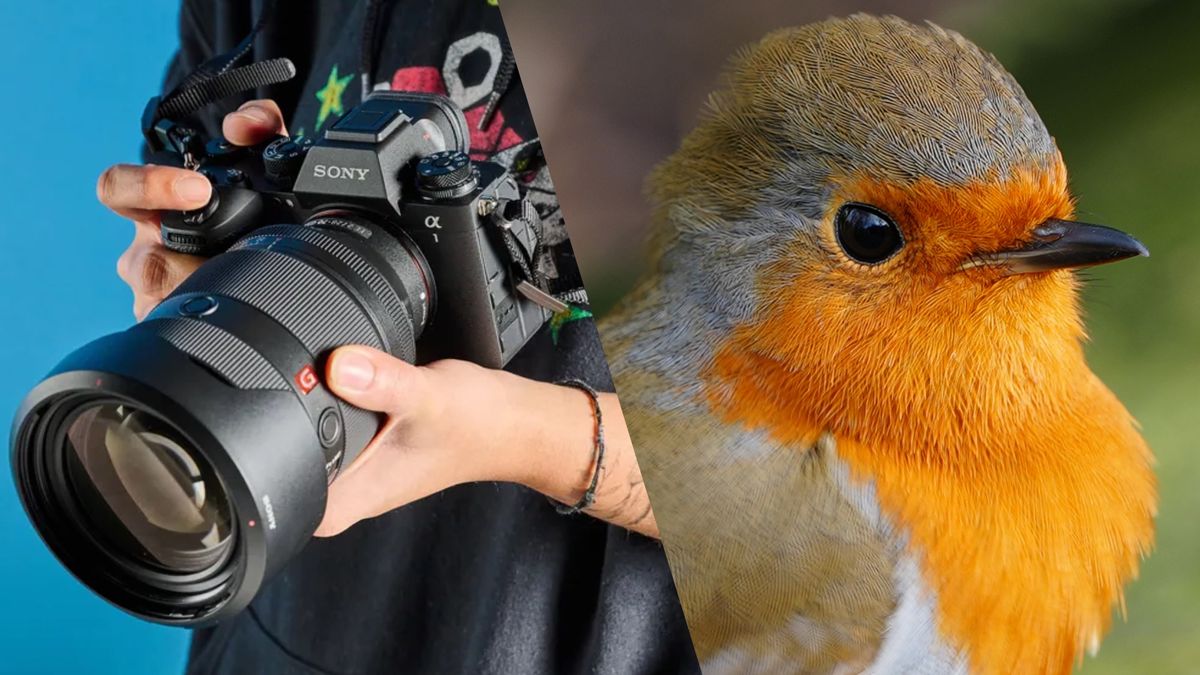What does a camera need to be considered as one of the best mirrorless cameras for wildlife and sports? A body that can withstand dust and rain, an autofocus system that’s so fast it can keep up with rapid soccer players and birds in flight, a detailed viewfinder and more. Well, the Sony A1 II is just that.
Sony’s flagship, which succeeds the five-year-old A1, is easily the most reliable camera I’ve had the pleasure of reviewing. I tested it for two weeks and when I was done, all I could think about was taking it out for another spin and photographing birds by the river. It boasts impressive specs for both stills and video, and it’s ease of use and sculpted grip mean handling it is a delight.
The A1 II has a steep price tag of $6,499 at Sony U.S. / £6,299 at Sony U.K. but for pros who don’t want to compromise on quality, it’s a must-have. The biggest selling point of the A1 II, for me, is its rapid autofocus system which takes the guesswork out of the equation so you can focus more on the camera’s settings and tracking quick-moving subjects. It’s so smart that it almost makes me feel stupid — let me show you why.
Birds of a feather
To achieve high levels of subject detection, the Sony A1 II is equipped with an advanced AI processing unit. Real-time Recognition AF and Real-time Tracking work in conjunction to focus on a wide variety of subjects. But that’s not all. The A1 II is the tech giant’s first camera to be able to recognize human bodies, faces, eyes, animals, birds, insects and many vehicles — and that’s because of the new Auto subject-detection mode. Sony also says that eye detection is 30% better than on the first-gen model, and it shows.
Say goodbye to guesswork and fiddling with settings; simply point at your desired subject and watch the camera work its magic. Throughout my testing, I didn’t miss a single shot I wanted. I wanted to capture a seagull in flight? Done. A pigeon landing on the ground? No problem. A human smiling at the camera? Sure. Even with my two master’s degrees and my Big Brain™, I didn’t have to think. Nothing was too complicated for the A1 II, which is what made me fall so quickly in love with it.
But of course, shooting birds in action (or sportspersons) requires tinkering with the shutter speed, ISO and aperture. Once I took care of those technicalities and found the subject I wanted to photograph, all I had to do was swap to the burst shooting mode. The A1 II uses Sony’s BIONZ XR Processor for 30fps burst shooting (for up to 153 raw images and with pre-capture). Combine this with the rapid autofocus and Auto subject-detection and you’ve got a camera that can capture practically anything.
The photo of the seagulls fighting is my favorite photo I’ve ever taken. You can see where the gull’s beak latches onto the other’s wing, and it’s a split-second moment that could have easily been missed had I not been using the A1 II.
Sharp, sharp glass
What good is a camera without an awesome lens? I tested the Sony A1 II with the new Sony FE 28-70mm F2 GM lens, and this is top-notch glass, meant for the pros. For sports and wildlife photography, it’s worth investing in a dedicated telephoto lens (like the FE 70-200mm F2.8 GM OSS II or of a longer focal length) but even so, the FE 28-70mm F2 GM holds its own. The photos of the robins you see above? I took them from a distance with the focal length set to 70mm, and then cropped into them in Adobe Photoshop, and the results are sharp.
The A1 II’s 50.1MP Exmor RS CMOS gives you lots of room for cropping without losing detail, as you can see the kinks in the robin’s fur and the individual hairs on its head in all the shots. Meanwhile, the lens creates a lovely, creamy bokeh by blurring the background perfectly, and spotlighting the primary subject.
I can see clearly now
I also have to give credit to the Sony A1 II’s large 0.64-inch viewfinder here. It has a 9.44-million-dot resolution so you get a lot of clarity and detail, and a maximum refresh rate of 240fps, which help you get the shot you want.
There were no blackouts between shots either. It also displays a lot of useful information, such as a Grid Line to help you determine if your horizons are level — and I found this extremely handy as it deleted a step out of the post-production process.
Did I say it’s very comfortable too? I wear prescription glasses and had no issues holding the camera up to my eye for several minutes on end.
If you know me at all or have read my camera reviews, you’ll know I’m a sucker for wildlife photography — I’ll do anything to try and get the perfect shot of a bird flying or a dog running. That’s why I enjoyed using the A1 II so much. I didn’t have to worry about missing a shot because I could completely trust the 30fps burst shooting mode and the autofocus. For pros looking to push their gear to the limit, I really can’t think of a better camera.
More from Tom’s Guide
Source link
